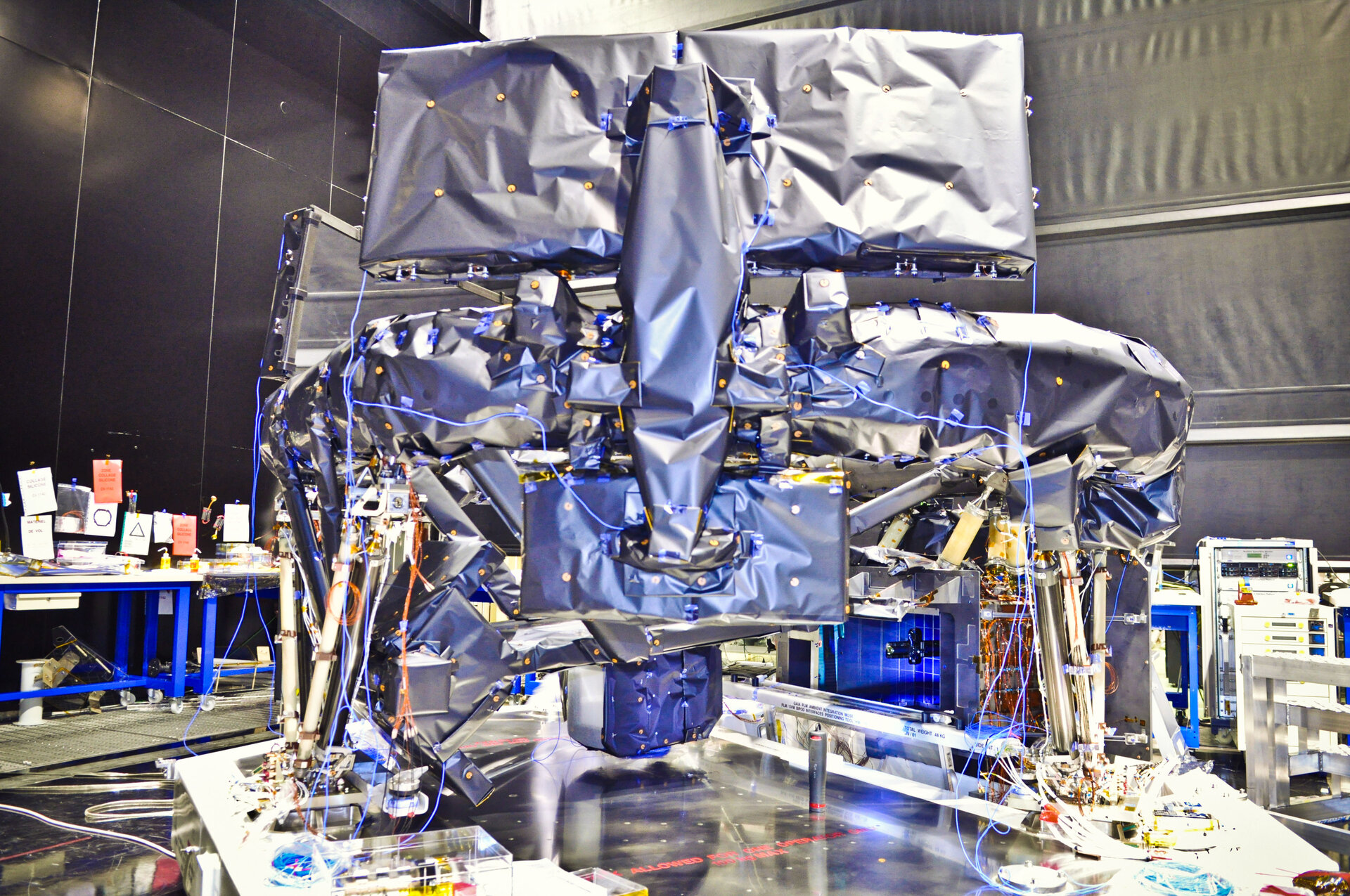Science instruments
Gaia’s telescopes, with their ten mirrors, focused and directed light onto Gaia’s three science instruments housed inside a protective dome within the payload module.
The astrometric instrument (ASTRO)
Gaia’s main astrometric instrument precisely determined the positions of stars in the sky. By combining the measurements of any given star over the five-year mission, it is possible to determine its parallax (and therefore its distance) and its proper motion (the velocity of the star as it moves on the plane of the sky).
The radial velocity spectrometer (RVS)
The RVS reveals the velocity of the star along the line of sight of Gaia by measuring the Doppler shift of absorption lines in a high-resolution spectrum.
The photometric instrument (BP/RP)
The photometric instrument provided colour information by generating two low-resolution spectra in red and blue. This allows astronomers to determine key stellar characteristics such as temperature, mass and chemical composition.


